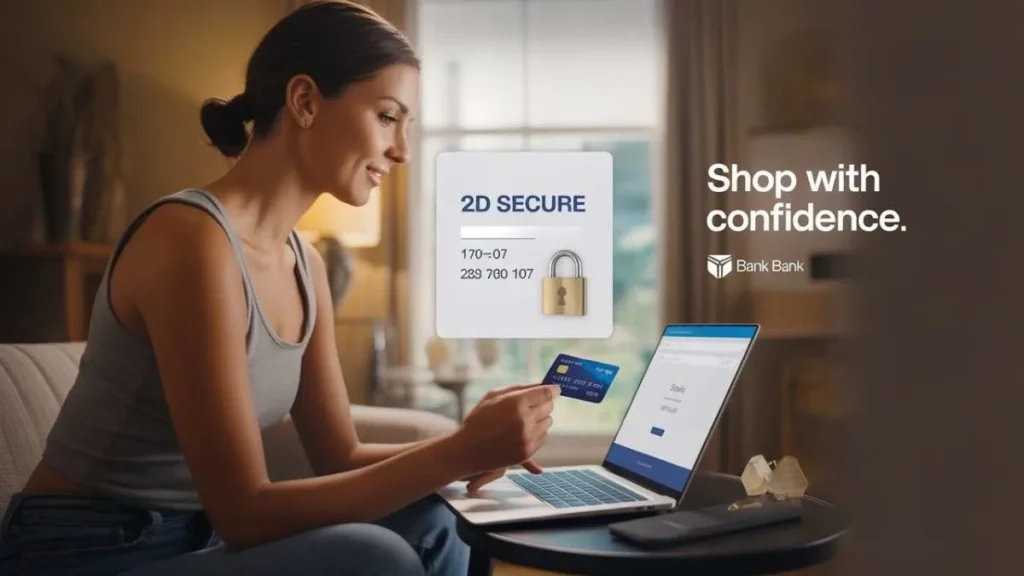
Online shopping is now part of everyday life in the U.S. Whether you’re buying groceries, booking travel, or paying bills, credit cards make digital transactions quick and convenient. But behind the scenes, different security systems determine how safe your payment really is.
One term you may still come across is “2D credit card payment.” While this older method is rarely used today in the United States, it’s important to understand what it means, how it works, and why most merchants and banks have shifted to 3D Secure authentication systems instead.
This guide will explain the basics of 2D credit card payments, highlight the risks, and give you clear steps to shop safely online.
What Is a 2D Credit Card Payment?
A 2D credit card payment is the most basic form of online transaction authentication. It only requires:
- Card number
- Expiration date
- CVV (Card Verification Value) — the 3-digit security code on the back of your card
That’s it. Once you enter this information, the payment goes through without requiring any additional authentication, like a one-time password (OTP) or biometric verification.
In simple terms: 2D = one-step verification.
Why Do People Still Hear About 2D Credit Card Payments?
Although most U.S. merchants now rely on 3D Secure systems (like Verified by Visa, Mastercard SecureCode, or American Express SafeKey), the term “2D payment” still comes up because:
- It was the standard method in the early days of online shopping.
- Some international merchants may still process 2D transactions.
- Consumers researching payment fraud risks often encounter comparisons of 2D vs 3D systems.
In the U.S., 2D payments are now rare because of the high risk of fraud and stronger consumer protection requirements.
2D vs 3D Secure: What’s the Difference?
The key difference is authentication level.
| Feature | 2D Credit Card Payment | 3D Secure Payment |
|---|---|---|
| Authentication required | Card number, CVV, expiry only | Card number + extra step (OTP, biometrics, banking app approval) |
| Fraud protection | Low | High |
| User verification | None beyond card details | Verified through two-factor authentication |
| Common in U.S. today? | Rare | Standard for most major issuers and merchants |
| Risk of unauthorized use | High | Much lower |
Think of 2D as leaving your door unlocked, while 3D adds a deadbolt.
The Risks of 2D Credit Card Payments
Because 2D payments rely only on card details, they are much more vulnerable to fraud. Common risks include:
- Stolen Card Information
If someone gains access to your card number, CVV, and expiry date (through phishing, data breaches, or skimming), they can complete online purchases without your knowledge. - No Extra Verification
Unlike 3D Secure, you won’t get a text message, app notification, or prompt to confirm the purchase. - Chargeback Hassles
While U.S. consumers have strong protection under the Fair Credit Billing Act, resolving unauthorized charges still takes time and effort. - Higher Merchant Risk
Businesses accepting 2D payments face more disputes, fraud losses, and potential penalties from card networks
Why U.S. Businesses Shifted Toward 3D Secure
The move from 2D to 3D Secure wasn’t random. It happened because:
- Fraud rates skyrocketed when only basic card info was required.
- Card networks (Visa, Mastercard, AmEx) introduced 3D Secure authentication to protect both consumers and merchants.
- Many U.S. banks now default to 3D Secure when processing online transactions.
- With the rise of mobile wallets (Apple Pay, Google Pay, PayPal), consumers expect two-factor authentication as a standard layer of safety.
Today, 3D Secure is the norm in the United States, while 2D payments are considered outdated and unsafe.
How to Identify If a Site Uses 2D vs 3D Secure
As a shopper, you may wonder: How do I know what kind of payment system a site uses?
Here’s what to look for:
- 2D Payment Checkout:
- You enter your card number, CVV, and expiry date
- The payment processes immediately
- No text, email, or app confirmation is required
- 3D Secure Checkout:
- After entering card details, you see a pop-up or redirect screen
- You’re asked to enter a one-time password (OTP), fingerprint, Face ID, or banking app approval
- Only after confirmation does the transaction complete
If you never get a second step of authentication, the site may still be using 2D payments.
Consumer Security Tips for Online Payments
Even if most U.S. payments are processed with 3D Secure, consumers should still practice safe habits:
- Use Credit, Not Debit
Credit cards offer stronger fraud protection and zero-liability policies. - Look for Secure Checkout
Ensure the website uses HTTPS and ideally 3D Secure authentication. - Enable Alerts
Set up email or text alerts for transactions through your bank. - Avoid Public Wi-Fi Purchases
Hackers can intercept payment data over unsecured connections. - Monitor Your Statements
Review monthly credit card bills for unauthorized charges.
Best Practices for Businesses
If you’re a U.S. small business owner accepting online payments, protecting customers (and yourself) is critical.
- Adopt 3D Secure Systems through your payment processor.
- Work with PCI-compliant gateways to meet security standards.
- Offer digital wallets (Apple Pay, Google Pay, PayPal) for added security.
- Educate customers about authentication to build trust.
Avoiding 2D payments reduces fraud losses and improves customer confidence.
U.S. Consumer Protections Against Payment Fraud
Even if you unknowingly make a 2D transaction, you’re not left defenseless. U.S. laws and issuer policies protect you:
- Fair Credit Billing Act (FCBA): Limits consumer liability for unauthorized credit card charges to $50 (and most issuers waive even that).
- Zero Liability Policies: Visa, Mastercard, Discover, and AmEx all promise $0 liability for fraudulent transactions if reported promptly.
- Bank Fraud Monitoring: Most U.S. banks flag unusual 2D transactions faster because they’re higher-risk.
Read Also-Idem Club Inc Charge on Credit Card
FAQs About 2D Credit Card Payments
What is a 2D credit card payment?
It’s a basic online payment system where only card details (number, expiry, CVV) are required, with no extra authentication step.
Is 2D payment safe?
No. It’s less secure because stolen card info can be used without verification.
Do U.S. banks still allow 2D credit card payments?
Limited use remains, but most banks and merchants have moved to 3D Secure authentication for safety.
What’s the main difference between 2D and 3D Secure payments?
2D uses only card details, while 3D adds a second verification step like OTP, biometrics, or app approval.
Can I refuse a 2D transaction?
Yes. You can choose not to shop on sites that don’t use 3D Secure or use digital wallets that require two-factor authentication.
What should I do if I’m charged fraudulently after a 2D payment?
Report it immediately to your bank. Under U.S. law and issuer policies, you’re protected from liability.
Conclusion: The Safer Path Forward
While 2D credit card payments were once standard, they are now outdated and risky. U.S. consumers and merchants overwhelmingly rely on 3D Secure systems to reduce fraud and protect transactions.
For shoppers, the best defense is awareness: understand how authentication works, use secure checkout methods, and monitor your accounts. For businesses, upgrading to 3D Secure and supporting digital wallets is no longer optional — it’s essential for trust and protection.
Bottom line: If you see a 2D payment system, think twice. Modern payment security has moved on, and so should you.

Emma Rose is a U.S.-based personal finance writer and a regular contributor at Cardix.us. She focuses on topics like credit cards, credit scores, and everyday money management. Emma’s writing makes complex financial concepts simple and practical, helping readers make smarter credit and spending decisions with confidence.


